Conversations across time
An exhibit at the Yale University Art Gallery features 150 years of art by Yale women.
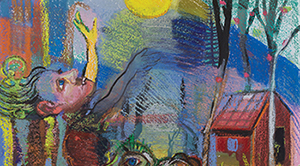 Yale University Art Gallery“The Frog King 1,” by New York–based artist Natalie Frank ’02, is one of a series of gouache and pastels on paper she made between 2011 and 2014. The images—-75 in all—-explore the stories of the Brothers Grimm, how they depicted social and sexual mores, and how we perceive them, past and present.
View full image Yale University Art Gallery“The Frog King 1,” by New York–based artist Natalie Frank ’02, is one of a series of gouache and pastels on paper she made between 2011 and 2014. The images—-75 in all—-explore the stories of the Brothers Grimm, how they depicted social and sexual mores, and how we perceive them, past and present.
View full image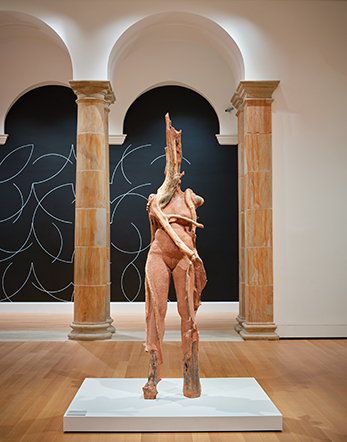 Yale University Art GalleryKenyan American artist Wangechi Mutu ’02MFA created “Sentinel 1“ for the 2019 Whitney Biennial, using a multitude of materials: paper, pulp, wood glue, concrete, wood, glass beads, stone, rose quartz, a gourd, and jewelry. Mutu, known for her painting, sculpture, film, and performance work, often focuses on the female form, exploring issues of self-image and gender constructs.
View full image Yale University Art GalleryKenyan American artist Wangechi Mutu ’02MFA created “Sentinel 1“ for the 2019 Whitney Biennial, using a multitude of materials: paper, pulp, wood glue, concrete, wood, glass beads, stone, rose quartz, a gourd, and jewelry. Mutu, known for her painting, sculpture, film, and performance work, often focuses on the female form, exploring issues of self-image and gender constructs.
View full image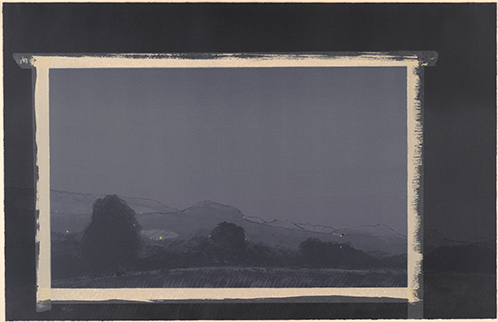 Yale University Art GalleryNew York–born artist Sylvia Plimack Mangold ’61BFA, known for her interiors and landscapes, made this complicated, trompe-l’oeil lithograph—“View of Shunnemunk Mountain”—with added hand coloring in red and yellow ink.
View full image Yale University Art GalleryNew York–born artist Sylvia Plimack Mangold ’61BFA, known for her interiors and landscapes, made this complicated, trompe-l’oeil lithograph—“View of Shunnemunk Mountain”—with added hand coloring in red and yellow ink.
View full image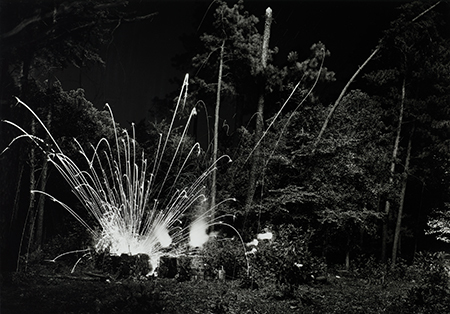 Yale University Art Gallery“Explosion,” by Vietnamese American photographer An-My Lê ’93MFA, was created as part of her series “Small Wars.” Lê, who grew up in Saigon, came to the US as a refugee in 1975.
View full image Yale University Art Gallery“Explosion,” by Vietnamese American photographer An-My Lê ’93MFA, was created as part of her series “Small Wars.” Lê, who grew up in Saigon, came to the US as a refugee in 1975.
View full image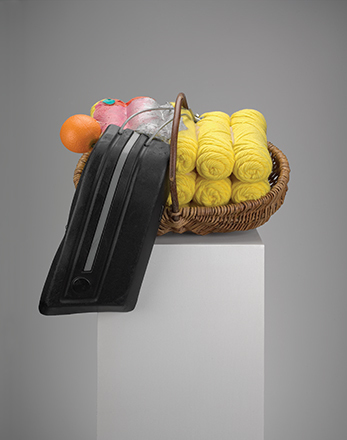 Yale University Art Gallery“Thank You, Anthony Caro” (1994), by Jessica Stockholder ’85MFA, draws on the legacy of the modernist sculptor.
View full image Yale University Art Gallery“Thank You, Anthony Caro” (1994), by Jessica Stockholder ’85MFA, draws on the legacy of the modernist sculptor.
View full image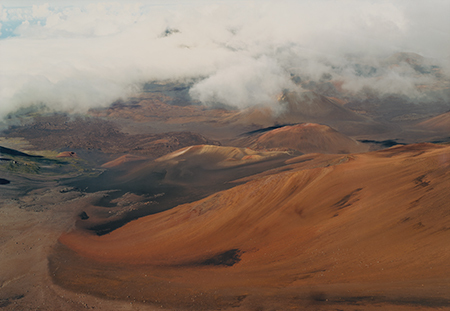 Yale University Art GalleryVictoria Sambunaris ’99MFA creates large-scale photographs—as here, with “Untitled (Maui, Hawaii, 2005),” to explore the relationship between humanity and the land.
View full image Yale University Art GalleryVictoria Sambunaris ’99MFA creates large-scale photographs—as here, with “Untitled (Maui, Hawaii, 2005),” to explore the relationship between humanity and the land.
View full image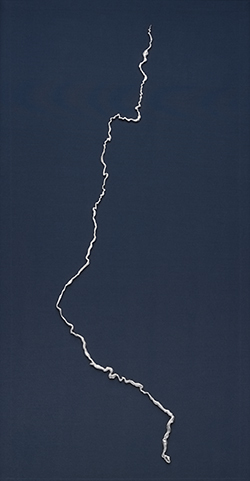 Yale University Art Gallery“Silver Housatonic (Benefit Edition, 2011)” is one of several pieces by Maya Lin ’81, ’86MArch, that are on exhibit at the Yale Art Gallery. Created in recycled cast silver, it is an aerial view of Connecticut’s Housatonic River; Lin coxed for Yale women’s crew on the Housatonic. Lin’s studies for the Vietnam Veterans Memorial in Washington, DC, are also on view in the exhibition.
View full image Yale University Art Gallery“Silver Housatonic (Benefit Edition, 2011)” is one of several pieces by Maya Lin ’81, ’86MArch, that are on exhibit at the Yale Art Gallery. Created in recycled cast silver, it is an aerial view of Connecticut’s Housatonic River; Lin coxed for Yale women’s crew on the Housatonic. Lin’s studies for the Vietnam Veterans Memorial in Washington, DC, are also on view in the exhibition.
View full image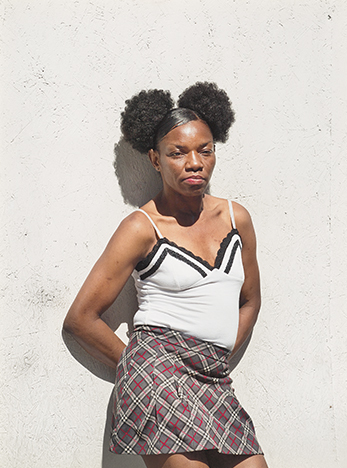 Yale University Art Gallery“Anonymous, San Francisco“ is part of “Boulevard,” a series by photographer Katy Grannan ’99MFA. Grannan spent three years on the series, photographing strangers on the streets of Los Angeles and San Francisco in bright sunlight—-most often people who might otherwise go unnoticed.
View full image Yale University Art Gallery“Anonymous, San Francisco“ is part of “Boulevard,” a series by photographer Katy Grannan ’99MFA. Grannan spent three years on the series, photographing strangers on the streets of Los Angeles and San Francisco in bright sunlight—-most often people who might otherwise go unnoticed.
View full image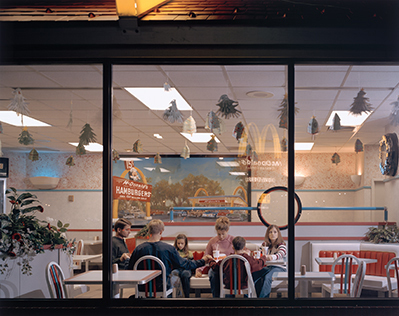 Yale University Art Gallery“Untitled (McDonald’s)” is by American photographer Angela Strassheim ’03MFA, from the series “Left Behind 2004.”
View full image Yale University Art Gallery“Untitled (McDonald’s)” is by American photographer Angela Strassheim ’03MFA, from the series “Left Behind 2004.”
View full image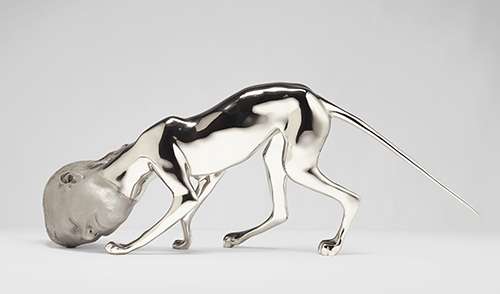 Yale University Art GalleryRona Pondick ’77MFA merged traditional sculpture techniques with computer technology to create Fox 1980–1999 (right)—a human-animal hybrid.
View full image Yale University Art GalleryRona Pondick ’77MFA merged traditional sculpture techniques with computer technology to create Fox 1980–1999 (right)—a human-animal hybrid.
View full image“These are dialogues across time and across media,” says Elisabeth Hodermarsky, lead curator of On the Basis of Art: 150 Years of Women at Yale. The exhibit, delayed for a year by the pandemic, is on view through January 9, 2022, at the Yale University Art Gallery. The works are by 79 women who graduated from Yale over the last 150 years. On the Basis of Art continues two celebrations: the 150th anniversary of the first women admitted to the university, at what was then called the Yale School of Fine Arts; and the 50th anniversary of the first women admitted to Yale College.
Staff and students took a deep dive into the lives and works of the artists, Hodermarsky says, collecting archival and primary-source research on the women no longer living and oral histories from many of those still alive. The art itself is arranged thematically rather than chronologically, to allow for generational dialogues—as if, she notes, former MFA students were “coming back to influence the next generation.”
Hodermarsky sees the exhibit, which she says is “the first time so much work by women is represented,” as an important benchmark in a world where historical art museums are filled mostly with art made by men. But, she adds, “while the gender binary was where this came out of, what you come away with is: This is just damn good work.”
|
|
 loading
loading